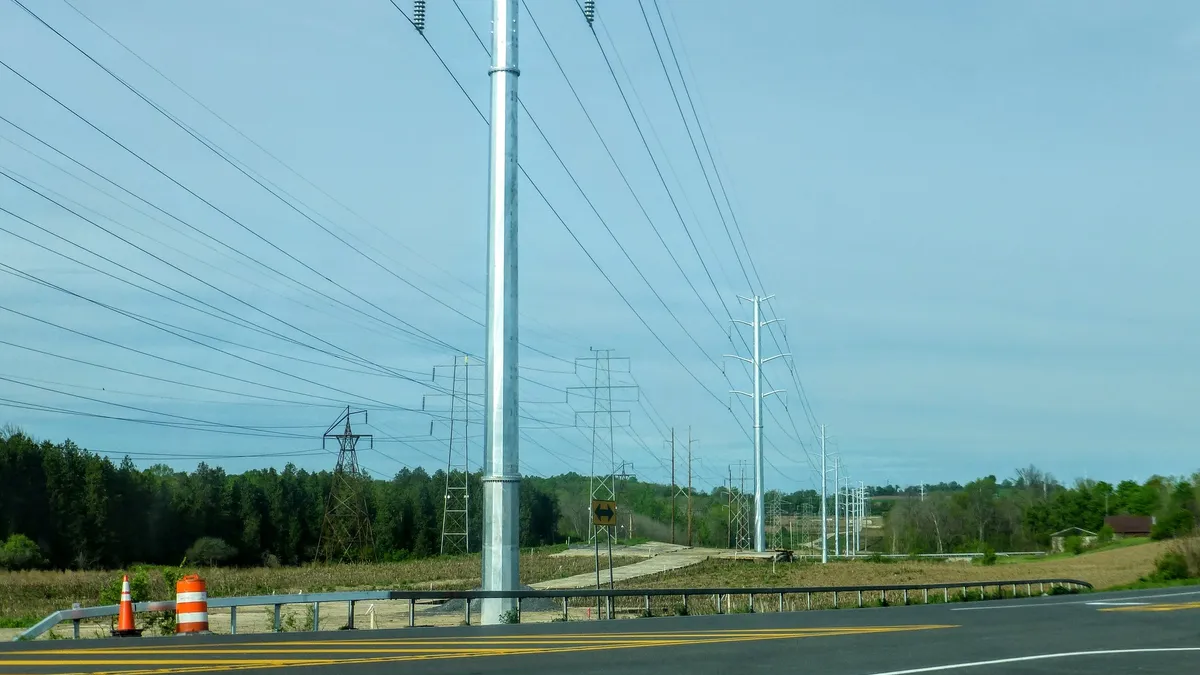Dive Brief:
- Energy storage is a cost-effective alternative to traditional transmission lines for integrating renewable energy, maintaining reliability and modernizing the electric grid, according to a recent study.
- Using storage as a transmission asset, or SATA, can yield savings for consumers and limit the impacts on land resources and the environment, said the study by the New York Battery and Energy Storage Technology Consortium, or NY-BEST, in partnership with Quanta Technology.
- It recommends officials improve transmission planning by examining planning rules, tariffs and market designs that the authors say have resulted in “denying and inhibiting SATA development” in New York.
Dive Insight:
An energy storage project would typically have a lighter impact on the land and shorter development, permitting and construction timelines than transmission, the study said. It also can be added incrementally to address uncertainties in transmission needs.
“While energy storage cannot completely obviate the need for all new transmission lines, as our study shows, there are several cases where using energy storage as a transmission asset can avoid overbuilding new transmission lines and greatly reduce the potential impact on New York ratepayers,” said William Acker, executive director of NY-BEST.
American Clean Power compares storage-as-transmission to adding a highway lane for rush hour traffic. By integrating a storage resource into transmission equipment, SATA can inject or absorb electricity to facilitate power flows on transmission lines, it said.
“Used in this way, storage can enhance existing transmission lines or even serve as an alternative to building new transmission projects,” the industry group said.
Three use cases demonstrate that SATA is an alternative to transmission wires, according to the study. It reduces congestion and cost-effectively improves transfer capability, provides a technical advantage of grid voltage support that improves transmission capability and renewable energy deliverability, and it can improve capacity deliverability and reduce local capacity requirements.
To increase transmission transfer capability over major bulk transmission systems, SATA can balance individual transmission line loadings and mitigate system voltage or stability issues, allowing the grid to carry higher power flows.
SATA also can provide voltage control and inertia that help the grid maintain consistent frequency and voltage. As a result, SATA may present an option to avoid costly transmission upgrades.
As fossil-fueled peaking generators retire, the power grid is losing operating flexibility in affected areas. Siting SATA can help planners avoid building expensive transmission lines and makes intermittent resources better able to respond to grid dispatch needs, the study said.
SATA would primarily control power flows among transmission facility loadings for more efficient use of transmission facilities.
American Clean Power said many RTOs and ISOs prevent or inhibit storage from being proposed or selected as a transmission project. As a result, they may not choose SATA even when it is cost-effective, forcing electric customers to pay “otherwise avoidable costs,” it said.
ISO-New England requests rule change for storage as a transmission-only asset
ISO New England asked the Federal Energy Regulatory Commission Dec. 29 to allow a rule change establishing storage as a transmission-only asset, or SATOA. The grid operator said such a system could be used in a rare situation when a municipality loses two of three transmission lines in a storm and the third line is overloaded, threatening an outage.
ISO-New England describes SATOA as an energy storage device connected to the pool transmission facility at 115 kV or higher, which can inject stored power to address transmission system requirements. The storage medium will not be restricted, ISO said: Batteries, air, water and other materials are acceptable.
The storage as a transmission-only asset will not be included in the grid operator’s market dispatch and pricing software or counted toward available reserve capability, ISO-New England said. The resources would instead be purpose-built as transmission equipment.
System operators could activate a SATOA to provide power by relieving the strain on the transmission line, ISO-New England said.














